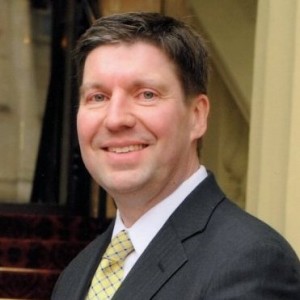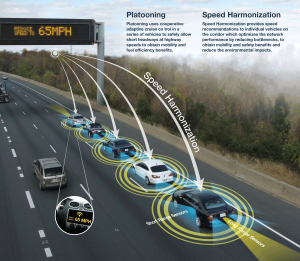Celebrating a Century: Booz Allen - Transportation Technology Leaders
Darcy Conlin
We continue our feature series about organizations driving automation in the industry with an informative glimpse at Booz Allen. 2014 marks the 100th anniversary of this management and technology strategy consulting company based in the greater Washington DC area. Booz Allen has 80 other offices throughout the US and approximately 24,000 employees. The company has a strong and longstanding relationship advising US government clients. When it comes to the US Department of Transportation (USDOT), Booz Allen has a sizeable transportation business on both the aviation and surface transportation side. Recently, Driverless Transportation had the pleasure of speaking with Dr. Christopher Hill, senior associate at the company and leader of the firm’s Intelligent Transportation System (ITS) practice.
The modal administrations that are part of the USDOT include the Federal Highway Administration (FHWA), Federal Motor Carrier Safety Administration (FMCSA), Federal Railroad Administration (FRA), and National Highway Traffic Safety Administration (NHTSA). Booz Allen has involvement in all of these USDOT offices, as well as the ITS Joint Program Office (JPO), and additionally does work for Amtrak and the US Postal Service. Dr. Hill mentioned that right now, his company is in the process of designing the next generation of right hand drive postal vehicles. Previously Booz Allen initially designed the existing US postal carrier vehicles and now has the auspicious job of creating the next generation.
While thinking about our country’s mail trucks as a fleet of connected vehicles (CV) is interesting and potentially worthy of an article here, let’s look at Booz Allen’s work within the government organizations mentioned above to help guide our driverless future. NHTSA is responsible for setting vehicle safety standards and the FHWA provides guidance for our states in how to build and deploy infrastructure. The consultation that Booz Allen offers can hopefully put us on the right track for the future. One of the many questions that loom large with the common media is how safe will our future connected vehicles be in regards to our privacy. Below is a photo, courtesy of the USDOT, that illustrates two ways CV may work; 1) by platooning; and 2) by speed harmonizing.
“I think that really gets to the core of the connected vehicle program as we’ve seen it evolve over the past 10 years. The federal government sees that it has a very important role to play in that. If you’re going to have vehicles communicating with one another, you’ve got to have that trust environment.“ Hill said. He is confident that the government has invested heavily in the security aspect of it.
“We need to ensure that these technologies are available in new vehicles and that they are built in a way that is interoperable and compatible with one another to make sure it fulfills that goal of allowing vehicles to communicate with one another.” Moving closer to that reality will hopefully lessen the staggering statistics in the news regarding loss of life from accidents due to human error. As humans, now we need to put our trust in the emerging technology.
Hill’s team at Booz Allen is currently working with NHTSA as they consider a rulemaking to mandate the radio technology in all vehicles. This will have a major impact on our automobile industry and how they are manufactured going forward. Booz Allen is currently developing the performance specifications for the vehicle dedicated short-range communications (DSRC) component that will ensure that the interoperability exists. This is what will allow vehicles to communicate with one another. The federal government has to play an active role in making the CV environment a reality by identifying what infrastructure is going to be required to support this system. Hill adds, “What type of national footprint, and over what period of time does that have to be deployed to ensure that connected vehicles work? That’s the public sector view and recognition of the government’s role.” This will hopefully engage car companies to continue to embrace the CV program as it will be so crucial to their customers going forward.
As the entire CV industry evolves, given their many years of experience Booz Allen’s role will likely continue to be a trusted advisor to our government. This is the same role the company has served for the last century. By continuing to provide deep technical support, the firm hopes to get into some of the specific issues associated with deployment. Hill states, “I expect us to continue to focus on that area. We have done a lot of work on strategy and management organizational issues. I would see us continuing to work in that area. As we see a nation wide system rolling out, I think there are going to be key aspects that are going to need those kind of skills.” And Booz Allen plans to continue to provide them.
However, there’s always potential for push back. Naturally, people are concerned about maintaining their privacy. And unfortunately when people don’t have all the information there becomes an assumption that you’re going to forego privacy in these kinds of large system deployments. Hill is convinced that from the very beginning the government and the carmakers of the CV program have been adamant about maintaining individual privacy. There has to be no potential of track-ability of individuals attached to the connected vehicle system. Hill states, “So far, the premise all through the research and design work that has been done is based on privacy by design. What has to be done now, as public awareness grows, is that we have to let the public know their privacy is, and will be protected.”
To that end, Dr. Hill shared that Booz Allen recently kicked off a new project for NHTSA to look at public acceptance issues. They will be conducting initial focus groups and surveys to try and understand what is it that will concern people as they hear more about the CV program roll out. Hill referred to the program as “vehicle to vehicle crash avoidance public acceptance analyses” and we hope to share those results here when they become available. Hill also noted the Federal Registers recent Request for Information seeking information and public comment regarding this issue of system security. We still have some work to do in order to allay public concerns but Hill foresees a positive outcome. “I think it’s something that can be accomplished because it’s a characteristic that’s been built in from the very beginning of the program.”
Looking back on 100 years of consulting and guidance, Booz Allen’s website states, “Edwin Booz said it best: Start with character… and fear not the future.”
And in looking up the definition of Century, we found this:
century |ˈsenCH(ə)rē|
noun (pl. centuries)
- a period of one hundred years: a century ago most people walked to work.
One hundred years from now, I wonder if that definition will read:
- a period of one hundred years: a century ago people operated cars
Stayed tuned for an additional article related to Booz Allen and the company’s continued work within our government agencies.




